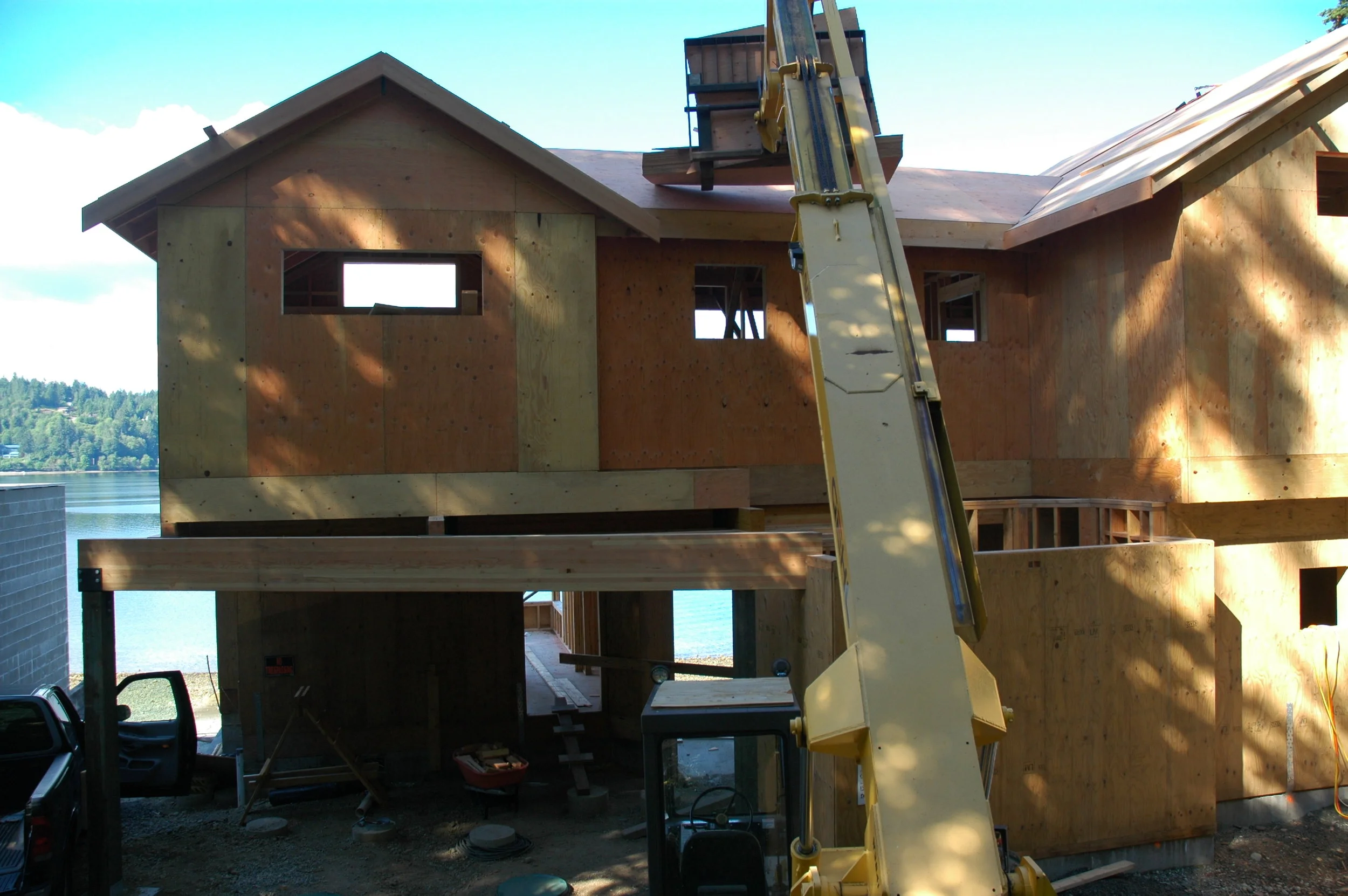How Are CC&R's Managed And Enforced?
Management of CC&R’s for Land Developers:
Nothing takes the fun out of a finished project faster than CC&R violations and the resulting enforcement actions. Two obvious keys to enforcement success are to be firm and consistent with lot owners in every situation, but executing that task can be a real challenge.
The best enforcement is the kind that doesn’t need to occur in the first place. For instance, if everyone obeyed speed limit signs, there would be no need for traffic tickets. Of course, the real world is different than that.
In a shout out to my Grandma, who always said “an ounce of prevention is worth a pound of cure”, we’ll look at preventing problems first, then enforcement of violations after.
Prevention Tip #1 - Lawful Drafting:
What good are CC&R’s if the are not legally binding?
The qualified real estate attorney makes sure each condition, covenant and restriction is lawfully described and drafted. CC&R’s must comply with applicable laws and that can be tested when enforcement comes into play. When serious violations happen everyone goes back to the ruling documents and there is nothing like having the law on your side at a time like that.
Prevention Tip #2: Constructive Notice:
What good are rules if they aren’t available to find?
CC&R’s, as well as other key documents like Road Maintenance Agreements, should be finalized well before the marketing phase. Every notarized document should be recorded with the County or other authority and a recording number issued. That number, available in the public records, provides constructive notice to the buyer of the recorded documents that apply to the property.
Constructive notice is when the information is available for the buyer to find in the public records and it is the buyer’s is responsibility to find them and comply. More information on public records can be found here: Recording and Public Records — Land Development Realities .
Prevention Tip #3 - Actual Notice:
Unfortunately, you can’t rely on buyers to do their homework:
Sadly, it’s common for buyers to skim through documents in real estate transactions. Even though constructive notice has been provided as described above, I take extra steps to provide actual notice on certain things.
It’s not that I am such a nice guy; it’s really to save myself headaches later! Example: If I decide that the project will allow composition roofing, but only architectural composition, I make sure to provide a hard copy of the CC&R’s (and RMA) at signing and before the inspection period starts.
The buyers acknowledge in writing that the documents have been placed in their hands. This process is actual notice and supports constructive notice, thus reducing the chances that one day, as head of the Homeowners Association, I will be driving through the project and see a roofing material violation that I need to take enforcement action on.
Warning: It can be bad practice to cherry pick and provide certain documents and not others. It might give the impression that the other recorded documents are less important. Clearly, they are all important! In the case of CC&R’s and RMA’s, my lawyer agrees that my approach is a valid exception to this rule.
Prevention Tip #4: - Know Your Own Stuff:
How can you enforce rules you don’t know yourself?
My CC&R’s tend to be on the long and detailed side. As President of the Homeowners Association it is my responsibility to fully understand and be able to communicate clear answers to lot owner questions on every part. How fast an answer is provided is less important than how accurate the answer is.
Questions and answers are submitted in writing and added to the HOA permanent files. Judgement of the HOA can and does come into play, one example being aesthetic harmony. The key is to be consistent across the board with every lot owner. Sometimes an issue comes up that is not covered in the existing documents. The best practice here is to draft and record an amendment to the original document to cover it.
Enforcement of CC&R’s for Land Developers:
Firmly dealing with problems.
Enforcement Tip #1 - Documentation:
Documented proof is a key step in enforcement:
The drafting real estate attorney should provide the exact method for submitting written requests for approval to the HOA. Submittals need to be made in writing, the same with approvals. Enforcement power is actually no power at all without documented proof and believe me, when a serious violation occurs nobody ever remembers it the same way.
An example was a time I was driving through a project and was flagged down by a resident. He asked if it was ok to build an 8’ cedar fence. I told him the CC&R’s allowed it but he needed to put the submittal in writing. He was a little bit peeved that I didn’t give him an ok right on the spot, but he complied and the submittal was nothing like what he described verbally. Just one example of why I don’t take verbal requests or give verbal approvals.
Enforcement Tip #2 - Drive the Project and Stay Alert:
Rural lot owners can be independent minded:
Owners that take matters into their own hands is a characteristic I’ve seen many times. This is the guy that decides a chicken wire fence is perfectly ok, buys the materials and starts building. After construction starts is when you catch it, because this person never submits a request for approval in the first place. Action needs to be immediate and firm in these cases.
The action is an in-person stop work order, followed by a written notice of violation sent by certified mail / return receipt requested. That’s when the war starts because the materials are “bought and paid for and why are you being such an unreasonable jerk?” A key concept here is to flag construction violations immediately. I can’t drive my projects every day but I ask my key people to keep an eye out for me and between all of us, we catch most things.
Enforcement Tip #3 - Consistency:
The rules apply to all lot owners the same way:
I had a really nice large lot project with expensive homes in it. I allowed my usual rural flexibilities so there were horses and a few limited barnyard animals throughout the project - all fenced. I never once thought about beekeepers…
Beekeeping was not prohibited in the CC&R’s, therefore it was allowed subject to county regulations. Resident beekeeper #1 called me and asked if it was ok and told me where he wanted to put the hives. I told him no HOA approval was required for the hives, but I did need to approve their location since there were limitations in the CC&R’s on what could be placed along the side and front yards. His submittal looked good and he was soon off and running with the needed approval.
Resident beekeeper #2 was more of a maverick. Without notice he started placing his hives along the side and front yard. I found out on a drive-through and verbally told him of the violation and then sent the letter that required him to map out an area where his hives would be relocated to, then submit it to the HOA for approval. His written submittal complied and I gave approval in writing. I don’t know anything about beekeeping but I doubt the bees were too happy about the relocation. I know he wasn’t.
In both cases consistency was applied equally and fairly.
Enforcement Tip #4 -
If You’re Right, Stick To Your Guns:
Some residents are agitators and if you are on the right side of an issue, a firm but professional confrontation might be needed. I had a project with a retired lawyer who loved to stir things up. He’d call me on the smallest things, pick apart the recorded docs and write 3 page letters with undertones of future litigation.
I knew my documents, my project and the regulations pertaining to it. After a I took a bit more harassment I asked to meet him at his property which he had done some really cool things with that I complimented him on.
I also told him in no uncertain terms that I was not intimidated by his threats, had no intention of responding to 3 page letters with 10 or 12 requests in them and that I would not be subject to interrogations about things he damn well knew the answers to already. In short, “I am not afraid of you and stop wasting my time”!
That’s all it took since he was the predator type that liked to intimidate people. If he sensed weakness he pounced on them. Once we had our little discussion, he never wasted my time again.
Review:
Remember, prevention is the best cure to avoid enforcement and here are some related articles to today’s discussion:
How to Manage a Homeowners Association: How To Manage A Homeowners Association — Land Development Realities
Rural Residential CC&R Considerations: Rural Residential CC&R Considerations — Land Development Realities
What are CC&R’s in Real Estate? What Are CC&R’s In Real Estate — Land Development Realities
What to know about easements. What To Know About Easements — Land Development Realities







